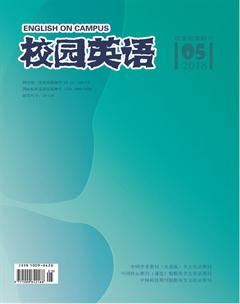Cognition and Locative Constructions of Verbs
【Abstract】Cognition flexibility is humans gift, and it can make content moving verbs and container changing verbs interchangeable. However, it is important to interpret why some verbs can only show in one locative construction, and why some verbs can show in both the container-locative construction and the content-locative construction. This paper will follow Steven Pinkers thought to find the “rules” behind verbs through cognition.
【Key words】verb locative constructions; cognition; Steven Pinker
【作者簡介】于溪,女,哈尔滨师范大学英语语言文学专业硕士研究生。
Verbs are important enough that can decide the meaning of sentences. Therefore sentences are built around their words and linguists refer this phenomenon to verb construction. Container-locative construction and content-locative construction are two basic types of verb locative construction. Some verbs only show in the container-locative construction, some verbs only show in the content-locative construction, and some verbs can show in both constructions. Human cognition has the ability to switch among different constructions. There are verbs like “daub” can show in the two constructions. People can say “daub slogans on the wall” and can also say “daub the wall with slogans”. There are also verbs can not show in both constructions. For example, people can say “fill the glass with milk”, but people can not say “fill milk into water”. If we follow the cognition to use all the verbs in both constructions simply, there will be a mistake. The rules of locative constructions are not easy to find, so the reasons behind verbs need to be studied deeply with our cognition.
Steven Pinker takes “load” as an example and explains that linguists call “load hay into the wagon” the content-locative construction, because the content being moved is focused upon in the object of the sentences. Then they called “load the wagon with hay” the container-locative construction, because the container being changed is focused upon(Steven Pinker 35). But there are some phenomena we cant explain. Therefore Pinker gives a comprehensive interpretation.
First, the “frame” is the keyword. Pinker assumes that “A causes B to go to C” is the meaning of content-locative construction, and “A causes C to change the state (by means of causing B to go to C)” is the meaning of container-locative construction(Steven Pinker 43). The former is something you do to B, namely the “slogans” and “hay”. The latter is something you do to C, namely the “wall” and “wagon”. In a word, the same event may have two different construals (frames).
Second, its about mind and holism effect. When people say “load hay into the wagon”, it means the quantity of hay is arbitrary. It can be a few kilograms or even a few pitchforkfuls. But when people say “load the wagon with hay”, it means the wagon is full of hay. That is what linguists call holism effect. Likewise, “daub the wall with slogans” means wall is daubed with slogans totally. Therefore, container-locative construction follows the holism effect. Humans mind construes container as the affected thing. Besides, the holism effect also shows in the direct object. Pinker gives examples in following. In “Peter painted on the door” and “Peter painted the door”, we can see “the door” as direct object in the second one shows that the door is painted completely. Pinker also gives another pair of examples: “Pedro went from sick to well” and “Pedro was sick”. The first sentence shows that Pedro had changes in his body, and we can also say his health moved. But in the second one, Pedro was in the state the whole time. Pinker explains that a state is conceived as a location in a space of possible states, and change is equated with moving from one location to another in that state-space(Steven Pinker 47).
Third, geometry and physics decide the way people construe things. Take “pour” and “fill” as examples, “pour” means “to move with a continuous flow” and “fill” means “to put into as much as can be held or conveniently contained”. Pinker points out that it is a casual relation of “letting” rather than “forcing”. But “pour” is just a kind of moving method and doesnt care about where the liquid goes. So it doesnt fit the container changing locative construction. Thus, people can only say “pour water into the glass”. “Fill” is in connection with container. It doesnt care the moving method of liquid, but the changing of the container. Thus, people can only say “fill the glass with water”.
Pinker classifies the verbs according to the locative constructions. He also classifies the different locative constructions with physical phenomenon, geometry and human mind in his book. It helps people look at verbs with cognition, and differentiate the content-locative verbs and container-locative verbs.
References:
[1]Steven Pinker.The Stuff of Thought[M].New York:Penguin Group, 2007.

